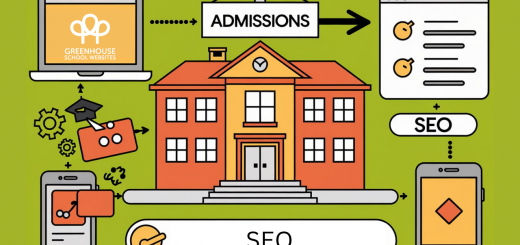Latest Update Sep 2017: Ofsted website requirements
 UPDATE – This page is a year old now so please also see our updated September 2018 blog post, Latest Ofsted Statutory School Website Requirements.
UPDATE – This page is a year old now so please also see our updated September 2018 blog post, Latest Ofsted Statutory School Website Requirements.
There are new statutory requirements which will affect the school website content of maintained schools from 1st September 2016.
In addition, in June 2017 the DfE updated their guidance for maintained schools regarding the information schools MUST publish on their school website.
(If you’re an academy, free school or college you now have guidance too! See our blog post on the recommendations from the DfE.)
It’s important you review the changes to ensure you remain compliant. To help, we’ve prepared a summary of the changes for you below, separating them into clarifications of existing information or new information. They can be read in conjunction with our free ofsted checklist for schools which has been updated to include the new requirements.
Contact Details
New:
- the name and contact details of your special educational needs (SEN) co-ordinator (SENCO) if you’re a mainstream school
Key stage 4 results
Clarifications highlighted:
- percentage of pupils who got a good pass (grade C or above) in English and maths – from January 2018 you should publish the percentage of pupils who achieved a strong pass (grade 5 or above) in English and maths
- percentage of pupils achieving the English Baccalaureate (EBacc) combination of subjects (this means pupils who got a GCSE grade C or above in English, maths, 2 sciences, a language, and history or geography) – during the transition to the new GCSE grading scale we will base the EBacc pass level on grade 5 or above for reformed subjects and grade C and above for unreformed subjects
Key stage 5 information
New:
If you are a local-authority-maintained school sixth form you should publish:
- the progress your students have made compared with students across the country, shown separately for A levels, academic, applied general and tech level qualifications
- the average grade that your students get at key stage 5, shown separately for A levels, academic, applied general and tech level qualifications
- the progress your students have made in English and maths
- retention (this is the proportion of students who get to the end of the main programme of study that they enrolled on at your institution), shown separately for each qualification type
- destinations (this is the percentage of students who continue in education or training, or move on to employment in the year after the end of key stage 4)
School complaints procedure
New:
You must also publish any arrangements for handling complaints from parents of children with special educational needs (SEN) about the support the school provides.
Pupil premium
Minor text changes highlighted:
For the current academic year, you must include:
- how you’ll spend the pupil premium to overcome
addressthose barriers and the reasons for that approach - how you’ll measure the effect
impactof the pupil premium
For the previous academic year, you must include:
- how you spent the pupil premium allocation
- the effect
impactof the expenditure on eligible and other pupils
Special educational needs (SEN) and disability information
New and clarifications:
You must publish an SEN information report on your school’s policy for pupils with SEN and should update it annually.
You should update any changes occurring during the year as soon as possible.
The report must comply with:
- section 69(2) of the Children and Families Act 2014, which includes:the arrangements for the admission of disabled pupils
- the steps you have taken to prevent disabled pupils from being treated less favourably than other pupils
- the facilities you provide to help disabled pupils to access the school
- the accessibility plan you have prepared in compliance with paragraph 3 of schedule 10 to the Equality Act 2010.
Equality objectives
New:
Public bodies, including local-authority-maintained schools, are covered by the public sector equality duty in the Equality Act 2010. This means you have to publish:
- details of how your school is complying with the public sector equality duty-accessibility plan you should update this every year
- your school’s equality objectives – you should update this at least once every 4 years
Details of these publishing obligations are set out in schedule 10 of the Equality Act 2010: advice for schools.
Finally
You can also read the newly updated list of requirements on the DfE website, though it doesn’t highlight the changes since the last update in September as we’ve listed them here.
Of course, you’ll still need to ensure you’re on top of the existing statutory requirements which stem from:
The School Information Regulations 2016
Special Educational Needs Regulations 2014
The Constitution of Governing Bodies of Maintained Schools 2015
Again, you might find our Free Ofsted and Statutory checklist handy as it pulls them all together into one place.











